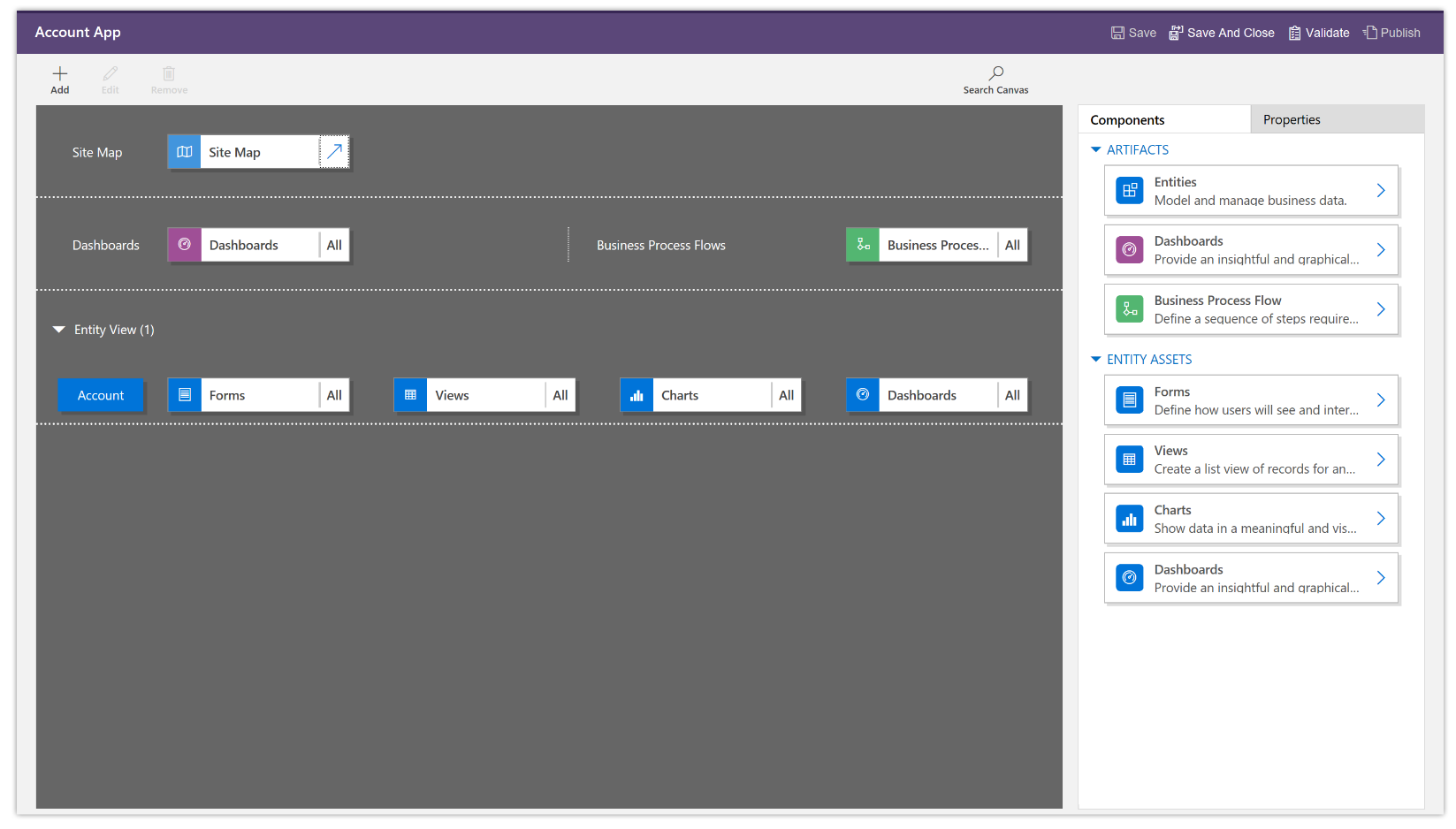Model-driven apps
Important
This content is archived and is not being updated. For the latest documentation, see Microsoft Dynamics 365 product documentation. For the latest release plans, see Dynamics 365 and Microsoft Power Platform release plans.
Note
These release notes describe functionality that may not have been released yet. To see when this functionality is planned to release, please review Summary of what’s new. Delivery timelines and projected functionality may change or may not ship (see Microsoft policy).
In addition to the canvas app development that PowerApps has been known for, which provides full visual control over the user experience of an app, PowerApps now offers another choice for high-productivity app development. With model‑driven applications, app developers can start building an app with their data model instead. They can model entities and their associated business rules, processes, forms, views, and dashboards. From this model, they can easily generate immersive user experiences by using the app designer.
To get started with model‑driven apps, use designers to:
Define your site map. Model your app's navigation, pulling in only the subset of information your users need. Take advantage of multiple levels of hierarchy and the ability to reference external resources.
Add dashboards. Include model‑driven dashboards or embedded Power BI content within your app.
Include entities and components. Add specific forms, views, dashboards, and charts for targeted entities to craft your user experience.

Model-driven apps list

Model-driven apps designer